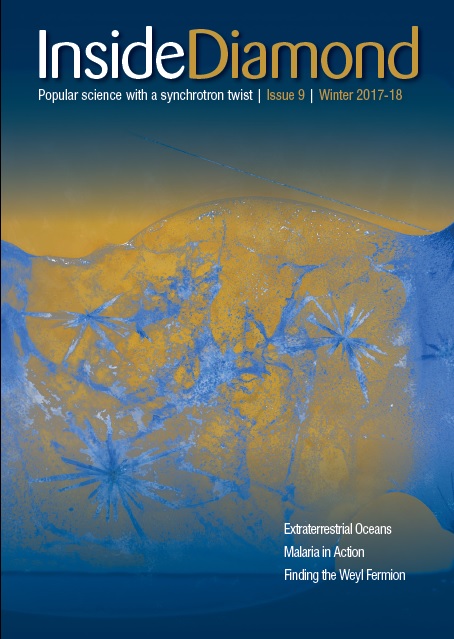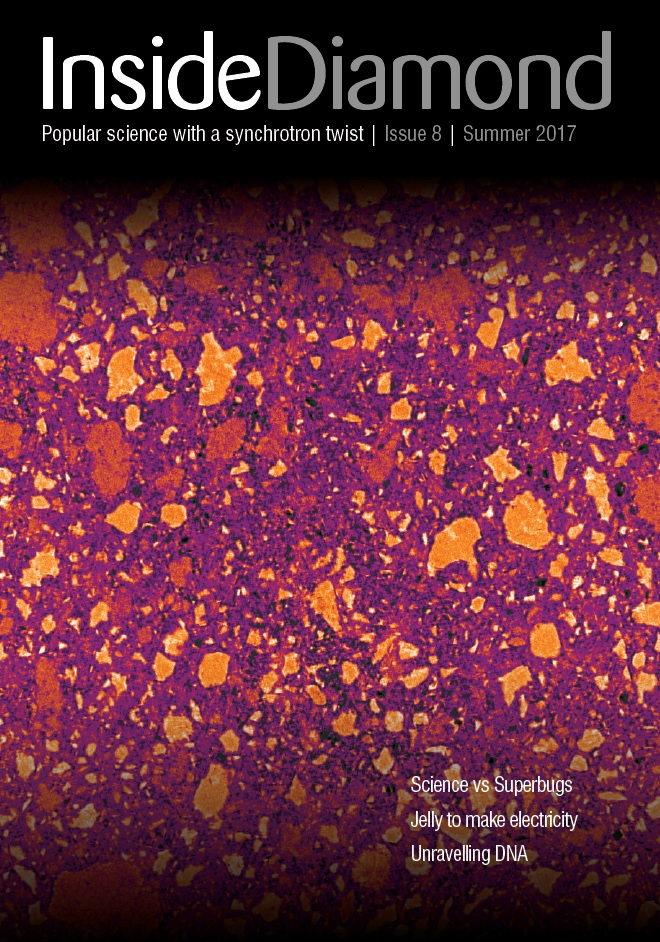Keep up to date with the latest research and developments from Diamond. Sign up for news on our scientific output, facility updates and plans for the future.
These articles were published in our popular science magazine: Inside Diamond

Those articles were published in our popular science magazine: Inside Diamond
Latest edition:
This article was recently published in our popular science magazine: Inside Diamond

Problem solving is a scientist’s favourite task. And one of the biggest challenges for material science is to design sustainable materials. “This includes materials made from cheap and abundant resources and also simple and safe manufacturing methods” says Zoe Schnepp, Chemistry Fellow at the University of Birmingham. With her team she looked at ways to power our cars and homes in a green and inexpensive way.

We all are aware that fossil fuels are not sustainable and pollute our planet. Even though, solar and wind power are fabulous alternatives, they are limited by nature –the sun doesn’t always shine and the wind doesn’t always blow. Batteries also can store energy, but have unfortunately a low energy density. This means the relation between the weight of the device and the amount of energy stored is low. Not to forget that a battery needs to be either discarded or recharged.
Diamond Light Source is the UK's national synchrotron science facility, located at the Harwell Science and Innovation Campus in Oxfordshire.
Copyright © 2022 Diamond Light Source
Diamond Light Source Ltd
Diamond House
Harwell Science & Innovation Campus
Didcot
Oxfordshire
OX11 0DE
Diamond Light Source® and the Diamond logo are registered trademarks of Diamond Light Source Ltd
Registered in England and Wales at Diamond House, Harwell Science and Innovation Campus, Didcot, Oxfordshire, OX11 0DE, United Kingdom. Company number: 4375679. VAT number: 287 461 957. Economic Operators Registration and Identification (EORI) number: GB287461957003.